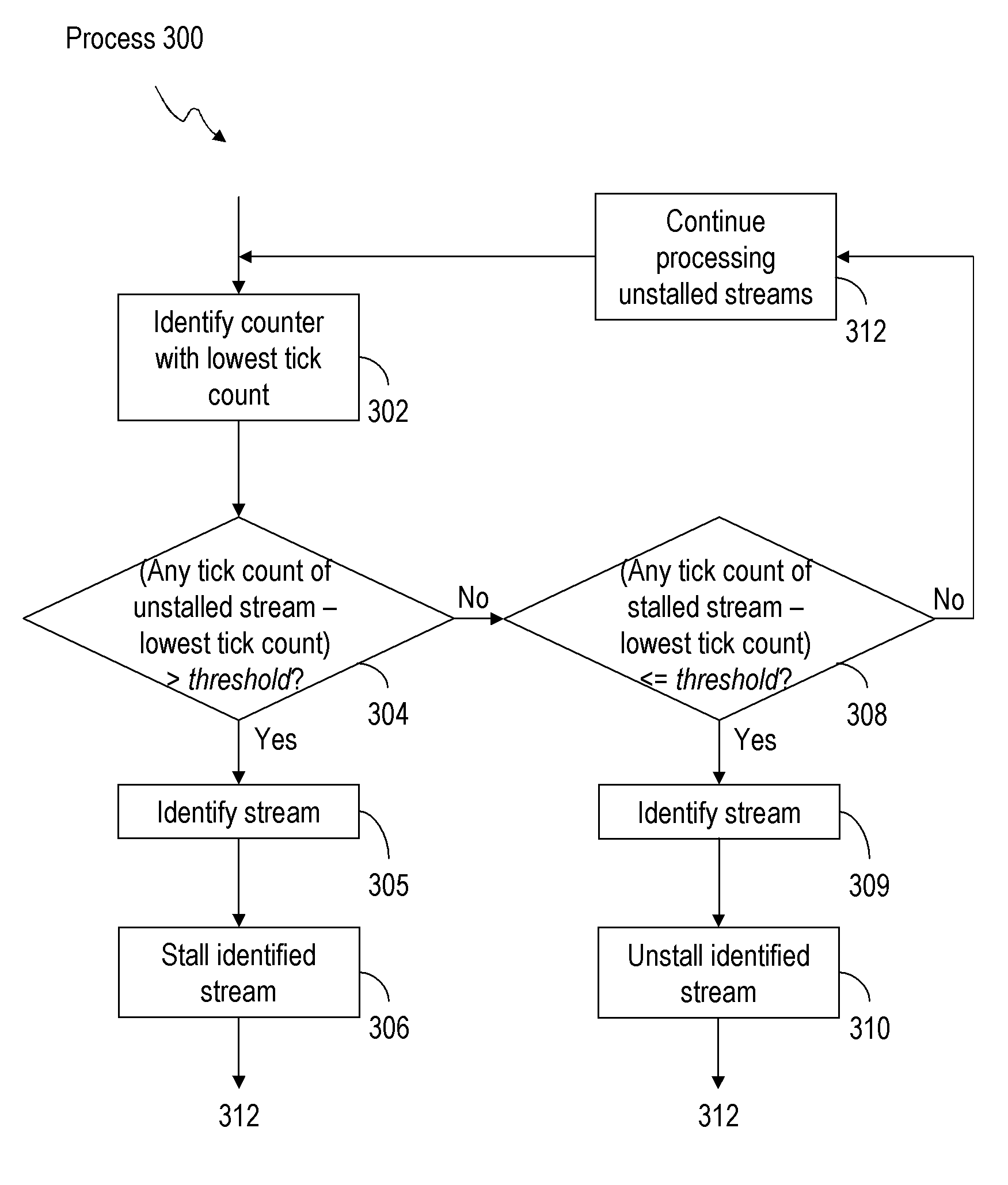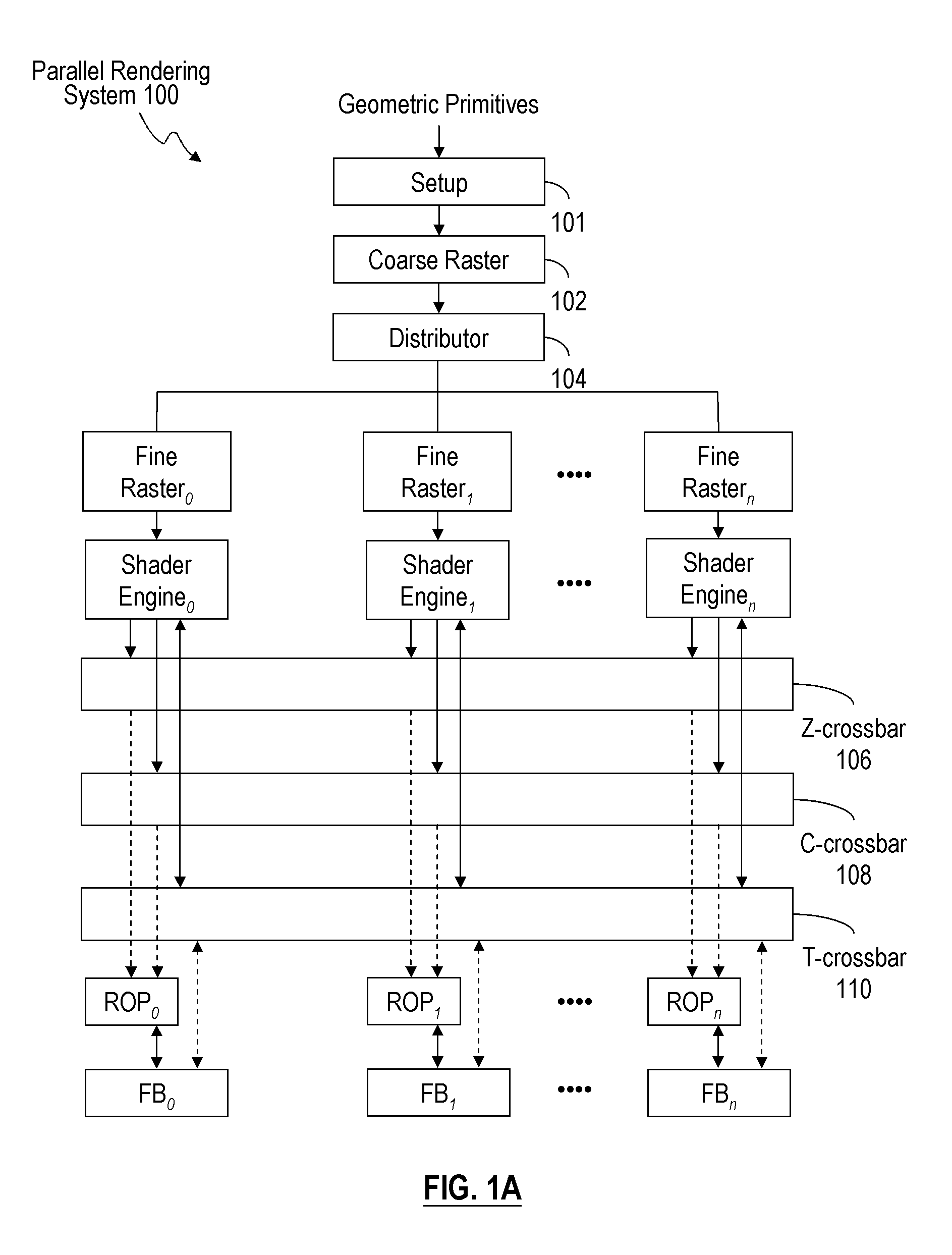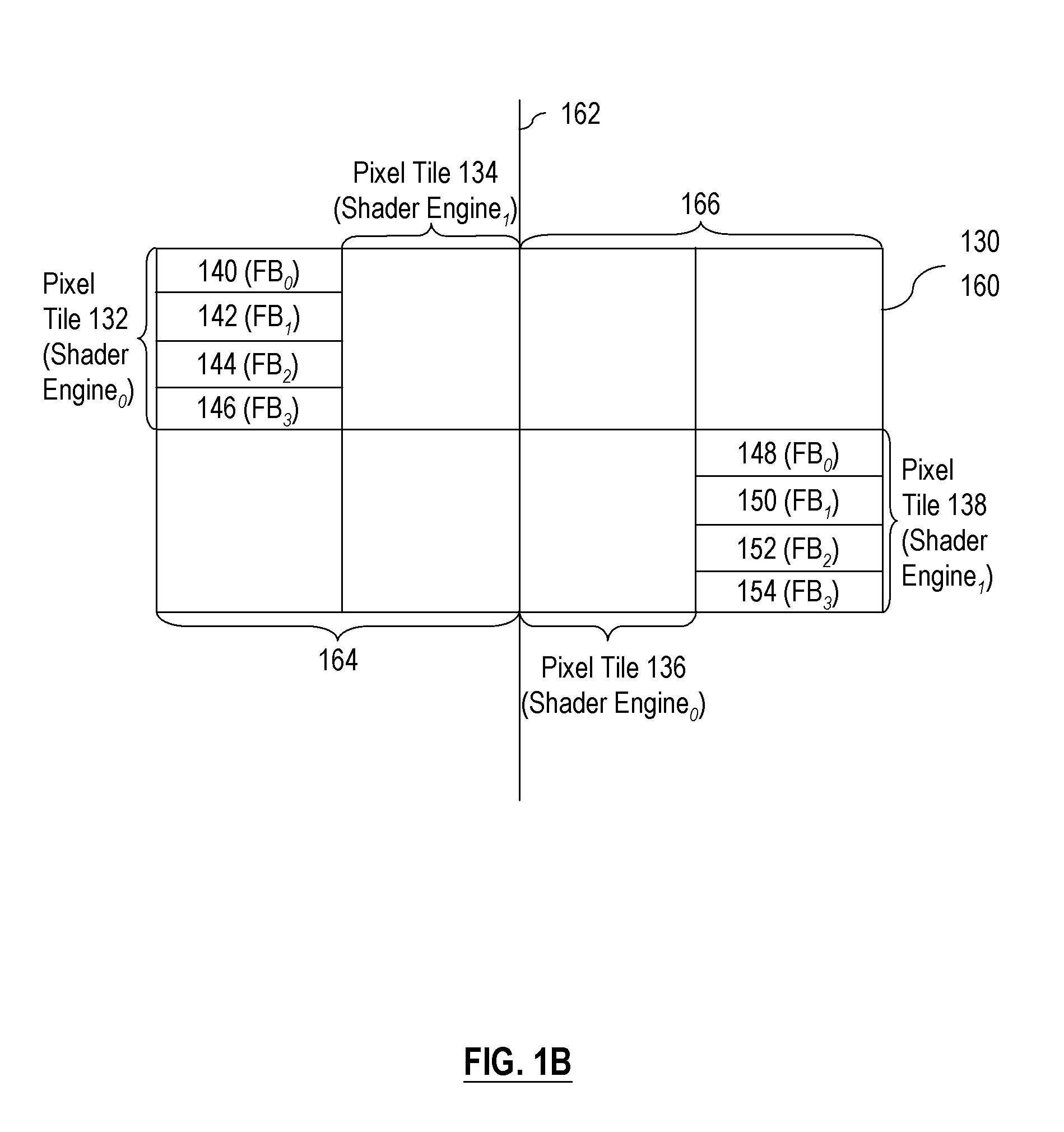Method and system for improving data coherency in a parallel rendering system
a parallel rendering and data coherency technology, applied in the field of parallel rendering systems, can solve the problems of large deformation of the overall performance of the parallel rendering system, undesirable delays, and cache misses
- Summary
- Abstract
- Description
- Claims
- Application Information
AI Technical Summary
Benefits of technology
Problems solved by technology
Method used
Image
Examples
Embodiment Construction
[0024]A method and system for improving data coherency in a parallel rendering system is described. In the following description, for the purposes of explanation, numerous specific details are set forth in order to provide a thorough understanding of the present invention. It will be apparent, however, to one skilled in the art that the present invention may be practiced without these specific details.
[0025]Throughout this disclosure, a “page” or a “memory page” generally refers to a row in a memory bank, which consists of an array of capacitors, which store binary data. A shader engine receives a “tile of work” when one or more geometric primitives intersect the pixel tile for which the shader engine is responsible. A “tick” broadly refers to a marker for the parallel streams of raster transactions flowing through the pipes in a parallel rendering system, such as parallel rendering system 200. A “processed fragment stream” broadly refers to a stream of fragments processed by each p...
PUM
 Login to View More
Login to View More Abstract
Description
Claims
Application Information
 Login to View More
Login to View More - R&D
- Intellectual Property
- Life Sciences
- Materials
- Tech Scout
- Unparalleled Data Quality
- Higher Quality Content
- 60% Fewer Hallucinations
Browse by: Latest US Patents, China's latest patents, Technical Efficacy Thesaurus, Application Domain, Technology Topic, Popular Technical Reports.
© 2025 PatSnap. All rights reserved.Legal|Privacy policy|Modern Slavery Act Transparency Statement|Sitemap|About US| Contact US: help@patsnap.com



